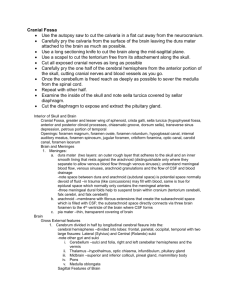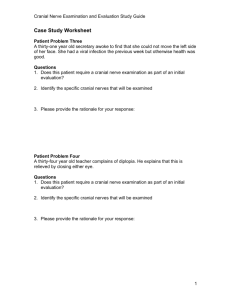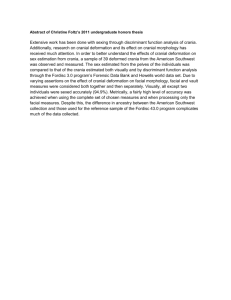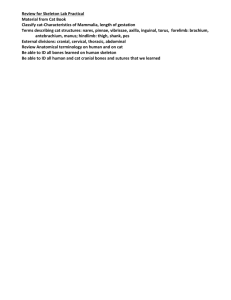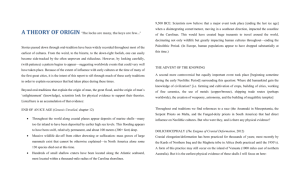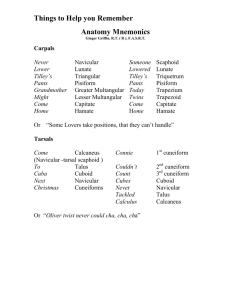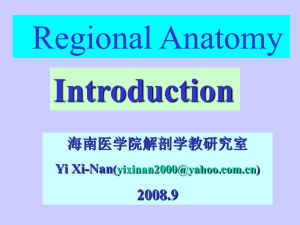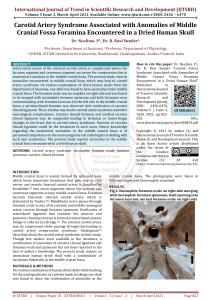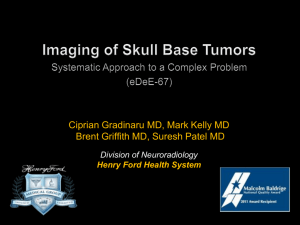8. Skull 2
advertisement
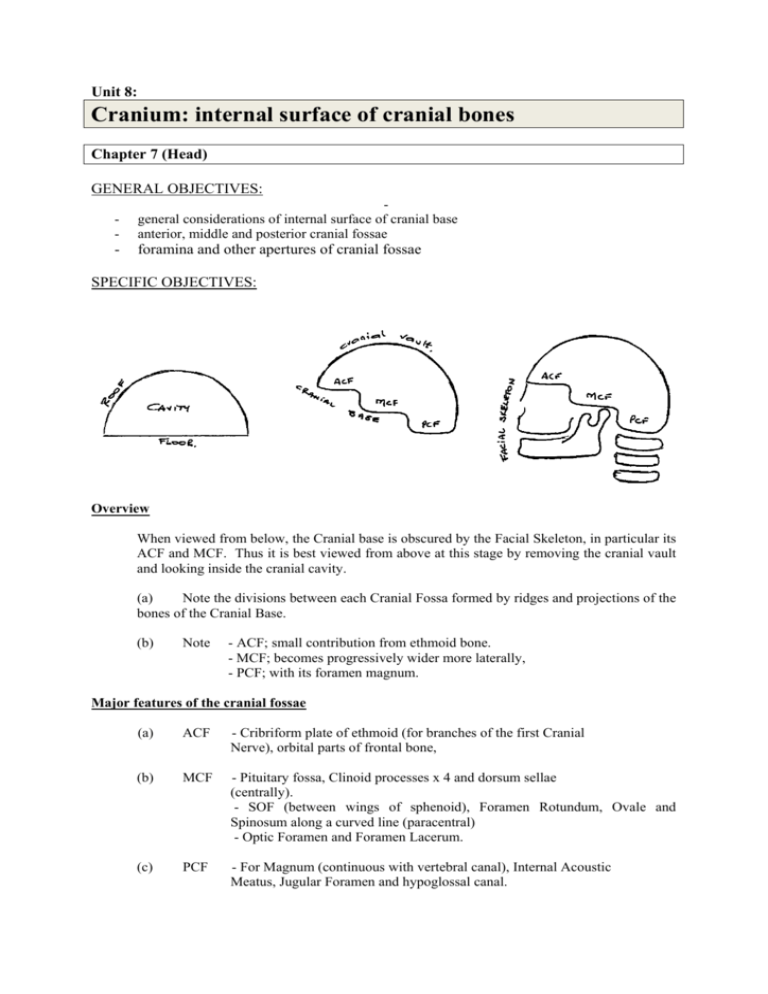
Unit 8: Cranium: internal surface of cranial bones Chapter 7 (Head) GENERAL OBJECTIVES: - general considerations of internal surface of cranial base anterior, middle and posterior cranial fossae - foramina and other apertures of cranial fossae SPECIFIC OBJECTIVES: Overview When viewed from below, the Cranial base is obscured by the Facial Skeleton, in particular its ACF and MCF. Thus it is best viewed from above at this stage by removing the cranial vault and looking inside the cranial cavity. (a) Note the divisions between each Cranial Fossa formed by ridges and projections of the bones of the Cranial Base. (b) Note - ACF; small contribution from ethmoid bone. - MCF; becomes progressively wider more laterally, - PCF; with its foramen magnum. Major features of the cranial fossae (a) ACF - Cribriform plate of ethmoid (for branches of the first Cranial Nerve), orbital parts of frontal bone, (b) MCF - Pituitary fossa, Clinoid processes x 4 and dorsum sellae (centrally). - SOF (between wings of sphenoid), Foramen Rotundum, Ovale and Spinosum along a curved line (paracentral) - Optic Foramen and Foramen Lacerum. (c) PCF - For Magnum (continuous with vertebral canal), Internal Acoustic Meatus, Jugular Foramen and hypoglossal canal. Walls of cranial cavity Internal and external tables of compact bone and diploë Regions of head Frontal, parietal, occipital, temporal, auricular, mastoid Orbital, infraorbital, buccal, parotid, zygomatic, oral, mental

